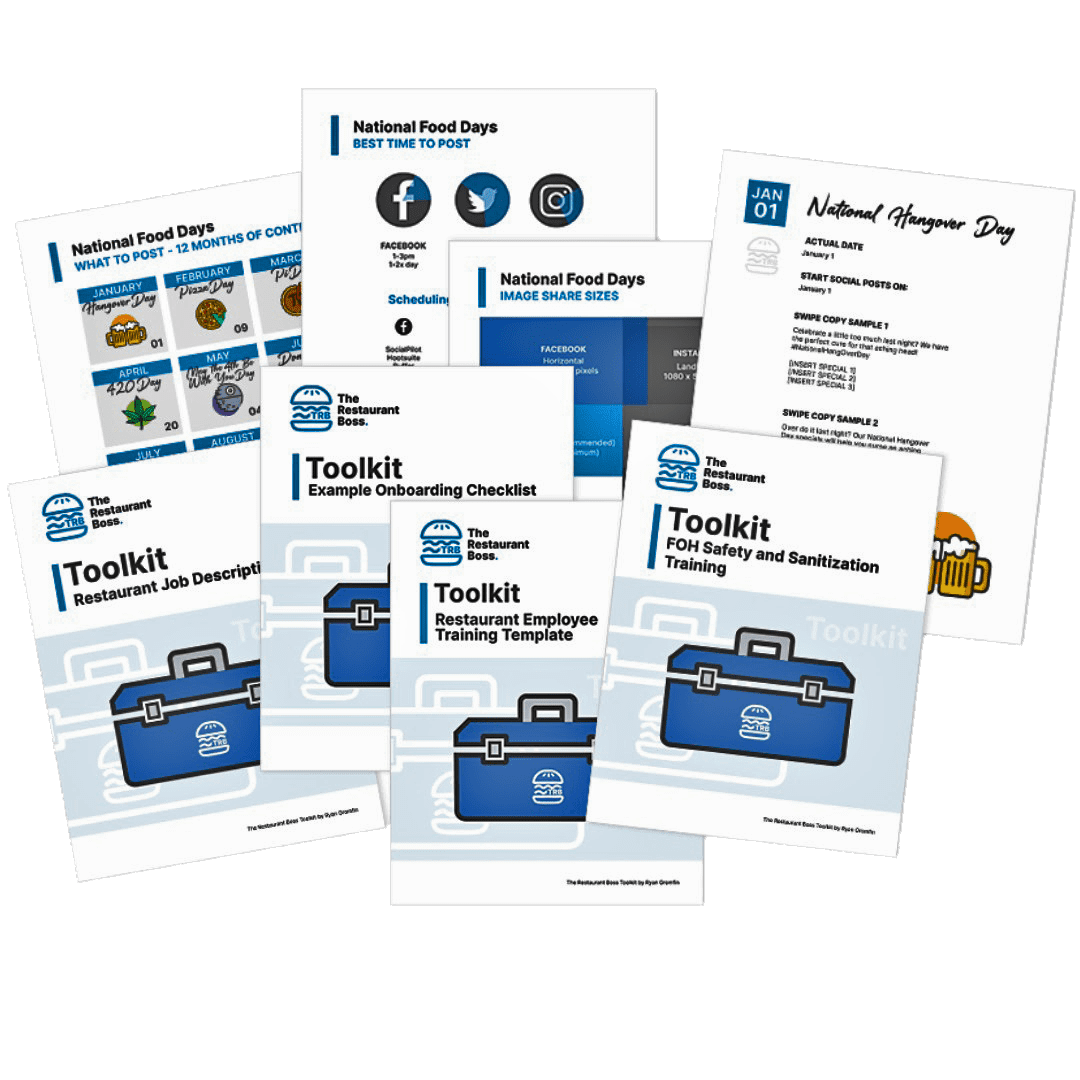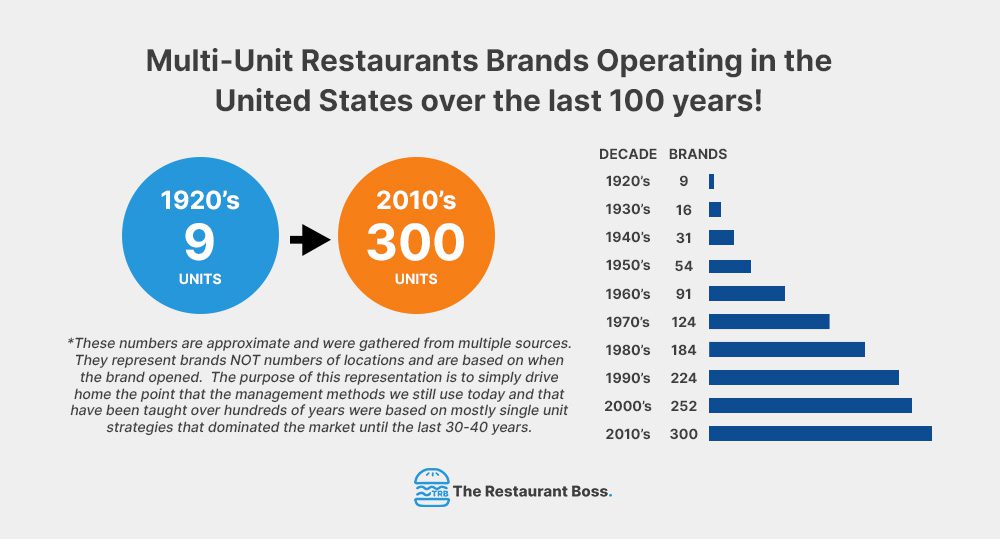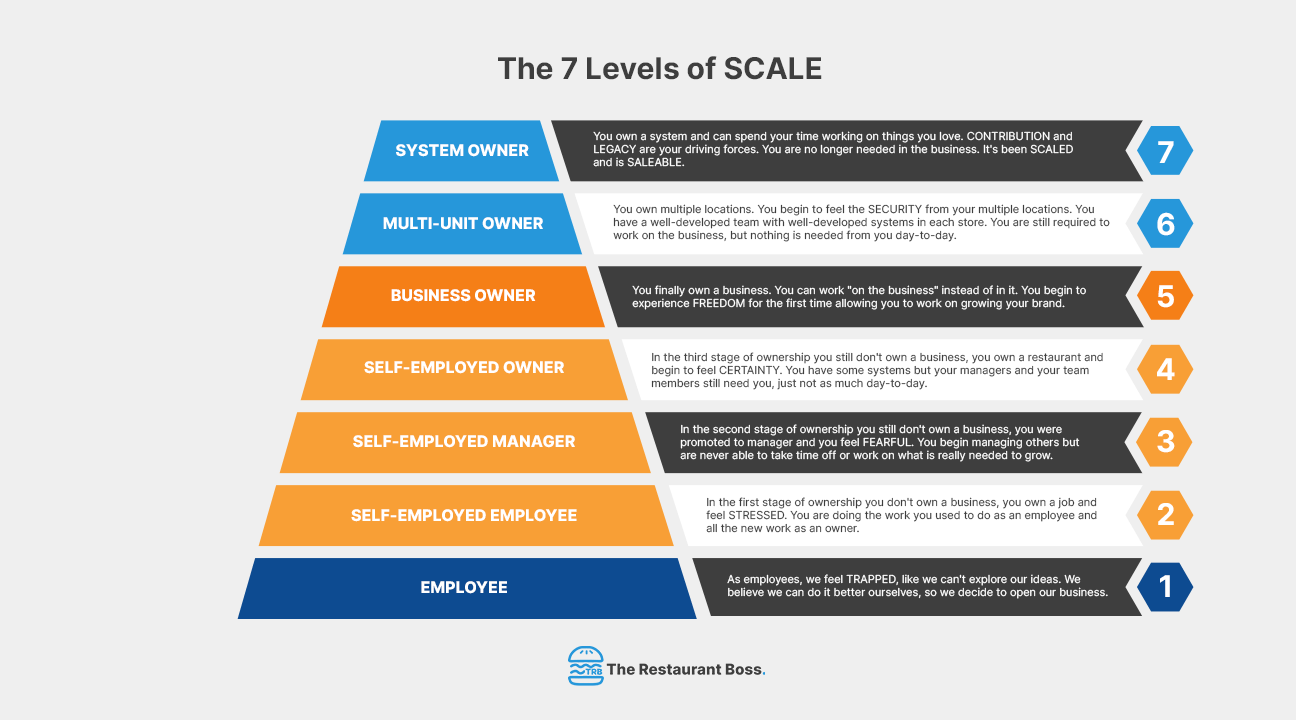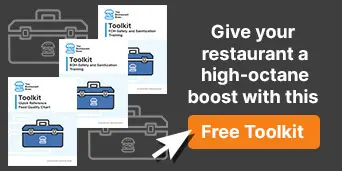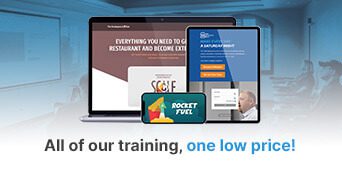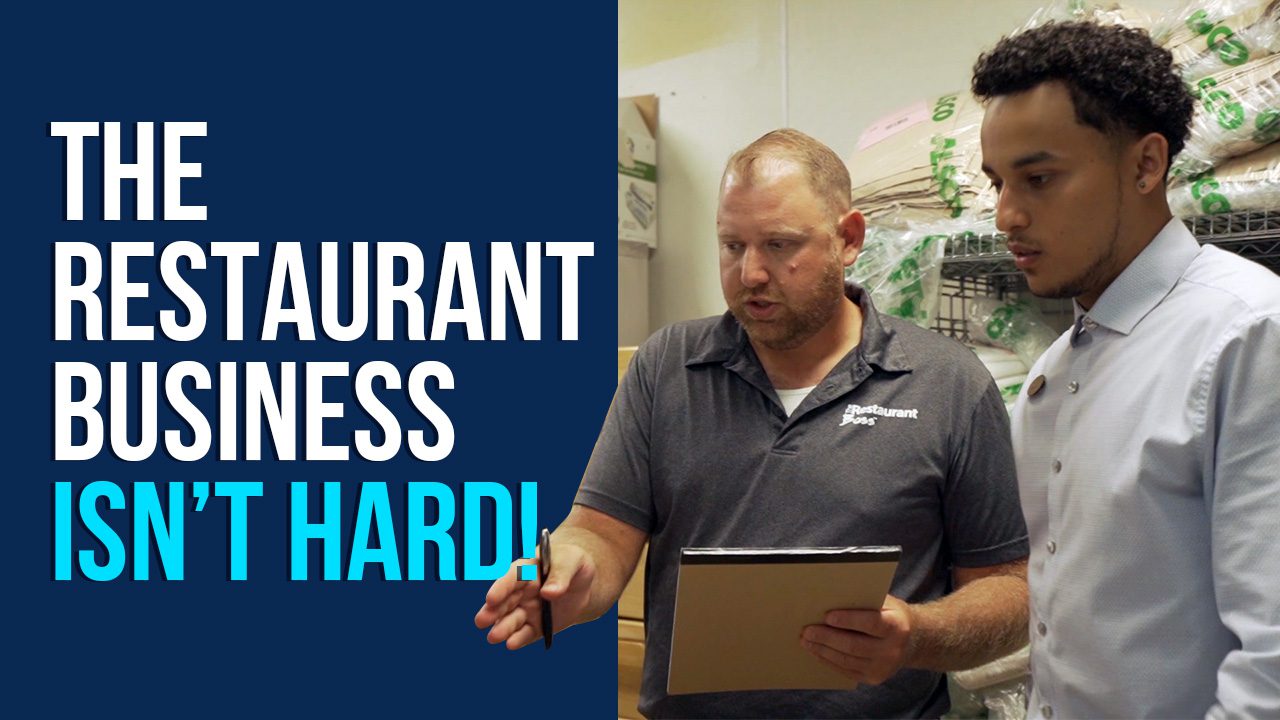SCALE and GROW your Restaurant with SYSTEMS
What does it mean to SCALE?
SCALE can mean many things to different people, it just depends where you are in your journey as a restauranteur.
For one of my clients, it means opening 100 units over a couple of years or, like another one of my clients, it means having the ability to take a Saturday off once in a while and not need to close.
SCALE can be anything in between the two.
👉 If you have one location and you want to a second one – that is SCALE.
👉 If you have 5 and you want 10 – that is SCALE.
If you want to be able to vacation for a month every year in Greece, live on your families vineyard and produce olive oil that you import back into the United States all while your 5 restaurants operate without you even calling in – that is SCALE.
These are just a few examples of what actual clients say to me when they hire me and need advice, assistance, strategies and accountability to help them reach their goals.
I am honored to say I have been a part of the above mentioned journeys and I have been the architect and bore witness to exactly how it happens, what gets in the way, what works and what doesn’t.
At this point in the journey, I would have to be a blind fool to not see the patterns. Success leaves clues but so does stress, struggle and overwhelm.
Over the past 25 years, I’ve paid close attention to all of the clues while running my own restaurants and coaching restaurant owners, managers and team members.
SCALE is the word I hear the most.
SCALE is what people stay awake at night thinking about.
SCALE is what seems to be the hardest to achieve and yet so close we can taste it.
That’s why from the moment I started coaching restauranteurs, I chose to focus on helping restaurants SCALE.
I quickly learned that SCALE is the result. It’s the output, not the input. In order to SCALE you must do a series of things well and in the correct order.
Think of SCALE like your favorite cake recipe.
You must measure the ingredients precisely, but that alone will not make a great cake. You must also mix the ingredients in the correct order and use the correct equipment.
If you start with the flour and then add butter last, your cake will be chewy and flat. You must whip the butter with the sugar until it’s light and airy, then add the eggs and vanilla, then carefully fold in the flour if you want a delicate light and airy cake.
Sure, this takes a bit of practice but it’s something anybody can do if they want to.
The skill is not the hard part, the skill is not why most bakers will fail at baking a great cake. It is the willingness to follow the directions, precisely, exactly as they are laid out for you, EVERY SINGLE TIME.
A great baker does not get bored baking the same cake over and over again. A customer wants the exact cake the baker has made 1,000 times before.
❌ You think you can make it better.
❌ You think you have the recipe memorized and can bake it from memory.
❌ You think you know a better way.
❌ You take short cuts.
… because it’s hard to trust the process and follow the steps again, and again, and again.
If you want to SCALE your restaurant (or any business for that matter) you DON’T need to create the process.
You don’t need to develop the recipe or invent new processes along the way.
We can stand on the shoulders of the giants before us who figured this all out and we can just DO WHAT THEY HAVE DONE exactly how they have done it.
This article will lay out the steps needed to SCALE your Restaurant.
I've created a Membership with all my best training courses and 2 Live Sessions a Month with me!
It can Happen FAST
I mentioned a client above that wants to open 100 locations in the next few years. That client is EPIC BRANDS and is most famous for their concept Agave & Rye.
At the time of publishing this they have 14 locations for Agave and Rye and 1 location for their new brand Son of a Butcher. They have plans for 6 more Agave and Rye’s, 4 more Son of a Butchers and a new concept called Papi Ocho’s — all in the next year.
5 years ago the owner of Epic Brands and her husband called me out to Columbus Ohio to help them with two failing restaurants they owned at the time called De Novo and Oliver’s.
Their journey is something you have to see to believe.
Watch this video and see part of how they went from 2 closed restaurants, tax liens, lawsuits with landlords and credit card loads to 14 locations in just 5 years.
EPIC Brands is just one example of how fast this type of growth can happen. Don’t get me wrong. This is not EASY but it is possible and dare I say SIMPLE when you follow the steps and methods that I’ve mentioned.
What might make this hard is that you’re going to have to trust a process that is new to you. You have to believe that your business is really not that different than everyone else’s. And you’ll have to do a lot of easy things that are going to seem like a waste of time at first.
The Keys to SCALE
I have been using the term SCALE since I titled my Restaurant Owner Training Program SCALE back in 2018. I love the word because it is really is a different journey for everybody, but SCALE is really just about leverage.
🤩 It is about getting more done in less time.
🙋♂️ More restaurants, without working more hours.
🤗 More free time while maintaining your income.
To do any of these, you need leverage — more specifically, they require you to leverage your TIME.
In order to SCALE, you must be able to get more done in less time. In order to get more done in less time you will need people to help you.
You can run a burger stand serving 50-100 guests alone, but you can’t run a burger stand serving 500 – 1000 guests alone.
You can be the operator of one location, but you can’t be the operator of two, three five or 100 locations.
You will need other people on your team to help you leverage your time.
How do you get the people on your team to do what you need them to do, when you need them to do it, how you want them to do it, without you being there?
📢 You need systems.
If you want to grow and SCALE your restaurant, this is the part that’s holding you back. You can’t work on the things you need to work on because your people aren’t doing what you need them to do.
We blame this on poor management or your blame your team but you don’t have a management problem. You have a people problem.
I’m not saying you have the wrong people on your team, I’m saying you’re still trying to manage people.
What worked for the past thousands of years will not work today. It’s only been in the last 50 years that the idea of SCALE has even been possible.
100 years ago you didn’t find a chain of a hundred units. Hell, you wouldn’t even find 10-unit chains. The only form of SCALE in business back then was Western Union or Union Pacific Railroad.
Other than a few outliers, businesses were mom and pop shops run by the operator.
The butcher, the baker and the candlestick maker.
There were no chains of butcher shops that opened up in every new city across the country. If you were a butcher in a city that already had one, you moved to a new city that didn’t have one yet.
McDonalds was one of the first and many have followed, but even McDonalds growth didn’t start until the mid-to late 60’s. However, the “modern” management methods that are still taught today, date back to early factory models of the 1800’s.
This relies on managers overseeing employees, telling them what to do ever second of the day.
If that’s you … HOW IS IT WORKING OUT?
📢 People can’t be managed.
Not only that, people don’t WANT to be managed. I have yet to meet a single person who put their hand up and asked to be managed.
Seriously – do you enjoy being managed? What makes you think you’re going to manage people better than the people you didn’t like who did it to you? Are you nicer?
HOW IS THAT WORKING FOR YOU?
📢 Systems can be managed, people can not.
Level 7 SCALE
This is not for everyone.
Not everybody wants to work the hours and put in the grind it will take but the cool thing about this processes is that you don’t have to get all the way to the top of triangle to achieve many of your goals.
But if you do want it, if this keeps you awake at night, if your brain is in overdrive with dreams of vacations, houses, cars, boats, toys, time with your family and creating the same for those around you ….
If “enough” just never feels like enough, if there’s always more to do then I have good news for you.
There is a recipe for this.
⚠️WARNING: It’s important to note that at some point in the journey it has to be more than just more stuff that you want. The work gets too hard, the hours are too long, the stress is too much if it’s just about stuff. For the ones who have SCALED to the levers where we are reading about them the mission is larger, it is one of leaving a legacy, changing the world, putting a dent in the universe, making something better than it is today.
That becomes the fuel for the engine of SCALE.
If you follow the triangle below, you will see how most restaurant operators have started their journey.
Level 1 SCALE – Employee Phase
We all start as employee’s and then at some point the trapped feeling forces us to open our own restaurant. Many think this is the end of the journey but it’s JUST the beginning.
It usually takes an enormous amount of hard work and risk to break though to the next phase. For many, this is the hardest step to take. It is also likely if you are reading this you are already in the next phase.
Level 2 – 4 SCALE – Self-Employed Phase
The owner first finds themselves as an employee in their own business. They are the technician, they are doing the work but over-time they move to managing others and then eventually operating the business and managing managers.
In order to move through this phase of self-employment and eventually reach the next level, the operator must begin to develop and manage systems instead of people.
Level 5 SCALE – Owner
At this stage the operator becomes an owner. The role shifts from managing people to developing people. The work hours are reduced significantly, the owner no longer owns a restaurant, they own a business, a business that is sale-able to another operator, even one without specific knowledge of restaurants.
The biggest mistake operators can make is to move into the next phase before this phase is mastered. Premature multi-unit expansion can be a disaster and throw you back down the ladder with more systems and more people. It is a recoverable mistake if managed properly and caught early but it is also the demise of many good brands.
Level 6-7 SCALE – MUO
As your open more locations you will first find yourself in the position of managing and leading the managers of your locations. This is fine and natural but it can only SCALE so far. Eventually, to reach the highest levels of SCALE, you will need to put a dent in the universe.
You will need to make it less about your goals and more about the goals of your team members and helping them achieve their dreams. Only then will you find yourself with a team of motivated enough individuals that they can continue developing the systems and leading their team to a point that you own a system. A system is amalgamation of all your units, processes and procedures that together far more powerful than separately.
A 2 or 3 unit chain of restaurants may sell for 3 – 5 multiples on earnings but 100 unit chains trade for upwards of 50 times earnings.
*At the time of writing this article, the average publicly traded restaurant in the United States trades at 50.02 price to earnings.
The Anatomy of a Good Restaurant System
Good systems are not just about checking a box or marking off an item that has been on your to-do list for while.
Many operators and managers read articles like this and get a lighting bolt of energy, they are going to create systems, checklists, prep-sheets, order guides, recipes, build-sheets, onboarding procedures, training manuals etc..
They scour the internet looking for free examples they can “copy” or templates they use. They get copies of other restaurants systems and quickly modify them to work in their restaurants.
They check “create checklists” off their to-do list and feel great about the progress they are making.
They laminate a piece of paper with 50 items on it, hang in on a station with a grease pen, tell their managers this needs to be done daily and then move on to the next item on their list.
I have compiled over 20 examples of the checklists, prep-sheets, order guides and a few dozen other systems I teach that will actually work.
There is a feeling of competition and progress because everyone is seemingly on board and things are changing.
Soon that feeling disappears because the kitchen was not closed properly just 2 days after implementing the closing checklist. Confusion, irritation, and anger sets in because you blame your managers and team.
(Remember what I said — people can’t be managed, but systems can)
You have conversations with managers, the conversations turn into demands, and the demands turn to anger and frustration. You blame the managers for not doing their job. The managers blame the rest of the staff for not doing their job.
But no one has ever stopped to ask 5 critical questions.
Is this a good system? Is the system for the system good? Have we trained our team properly on the system? Have we explained “the why”? Do our managers even care?
We then give up on systems after a few months of trying. They don’t work, my managers don’t care, my team doesn’t care, I can’t even get them to show up to work, if I ask them to do more they will quit.
We go back to the way it was….
Let me be very clear.
Systems work.
YOUR systems may not work, but SYSTEMS work.
The key is to create them properly. More importantly than just explaining the “why” is explaining how the “why” will help each of your team members.
Notice I didn’t say how it will help YOU or YOUR bottom line. How does it help your TEAM MEMBERS?
Then get your managers on board with the systems and get early, quick results for the entire team.
If a system does not make a job easier, faster and better, no one will ever want to use them.
Here are some pro tips to think about when creating your own systems.
1) Restaurant systems must be assigned to individual team members. If they are assigned to a group of team members or a department, then everybody will expect that everybody else will do it and nobody will.
2) Restaurant systems must be accurate and up to date. If they have checklist items that you don’t use anymore or an order guide is in the wrong order and takes longer to use than not to use, the team will not use them.
3) Restaurant systems must be clean and professionally formatted. If they have torn corners and written over the team will know you don’t respect them and they won’t respect them.
4) Restaurant systems must be YOUR systems. You can use proven systems as a guide to creating your own, but simply copying another brands systems without properly adopting them to your methods will result in obviously incomplete and in accurate systems. Just because something works for one brand does NOT mean it will work for yours.
5) Restaurant systems but be short and concise, they are NOT training documents, they are reminders.
How to Use Systems
If you’ve never done this before, the entire process of “systematizing” your business so it runs how you want without you there can be very overwhelming and intimidating.
Just take it one day at a time, know that there is NO overnight solution to this.
Look at some of the biggest brands today, Subway, In-n-Out, Chick-Fil-A, or Dominos. These brands have been operating for over 50 years and they didn’t get here overnight.
If there is anything in your business that is done more than once, it’s needs a system. Here’s a few examples of the processes that need to be documented so that each new team member is trained exactly the same way no matter who trains them.
Payroll, writing the schedule, opening your restaurant, closing your restaurant, ordering, greeting a guest, taking their order, answering the phone, or training a new cashier.
Systems can’t be something that we feel like following on some days, but not on others. They have to be woven into the fabric of what we do and how we do things in our company.
When I talk to independent restaurant owners, they often fight this idea, but when I speak to multi-unit managers or operators, they can’t even imagine that other restaurants don’t use checklists for each station to open in the morning, close at night, or conduct weekly cleaning and inspections.
We can Certify your Managers in The Restaurant Boss Management Methods for you.
It is part of their fabric, it is expected but more importantly, it is harder for them to get through their day without them. You can’t look at systems as something extra you do, you must look at it as what you do.
Then there must be the accountability on a daily basis. Without accountability, team members will cut corners and skip steps. It is the managers responsibility to check in with team members multiple times per day and ensure that they are following the steps.
If you open you kitchen with three cooks, each cook should have their opening checklist for their station and prep lists. The opening manager should check-in with the kitchen team immediately in the morning, again an hour later and again an hour later.
There should be an inspection 15-30 minutes before lunch service begins ensuring the stations are setup properly and all food looks and tastes good before a guest let’s you know.
What to do when your Systems Don’t Work (Develop People)
There will be times when your team does not follow the systems. The first step is to determine if they didn’t know how to do something or they just chose not to do it.
For most businesses, this is where the process stops.
It’s also why you will not be able to operate multiple units or leverage your time unless you’re willing to advance your leadership skills.
Managing systems instead of people will get you to the place you are ready to grow, but sustainable growth will only happen when you can develop people, which is what leaders do.
Managers Manage Systems.
Leaders Develop People.
Developing people is influencing their behavior, changing their outlook on situations, painting a brighter future for them than they can even see for themselves, then helping them achieve this vision by teaching the behaviors it takes.
Most of your team don’t need help with their hard skills like using the knife or entering orders into the POS system. That’s not what’s holding them back. It’s their soft skills, their habits and their behaviors that they need help with.
You can’t grow without a great team and you build a great team with great leadership.
SCALE
Whether SCALE is more units, more freedom or more money, the way you are going to achieve this and grow through the different levels is by:
1) Hard Work (there‘s no shortcuts in life — anything worth achieving is worth working hard for)
2) Managing Systems (people don’t want to be managed, but systems don’t care)
3) Developing People (people want to be lead, inspired, and coached, NOT managed)
4) Put a Dent in the Universe (build something that has never been built, change something for the better, people want to be a part of a movement)
If you are feeling frustrated, stuck or want some assistance in achieving your goals of SCALEing your Restaurant Faster here are a few options:
FREE
GOOD
BETTER
BETTER
BEST
Get your copy of my newest book completely FREE!
TRB Management System – Certify your team now!
Become a member and get new monthly training
Complete the best restaurant specific training available
Work with me 1-on-1 Schedule a Strategy Session
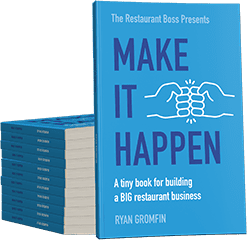
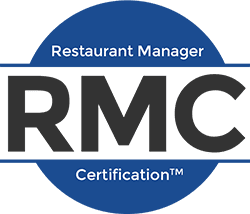
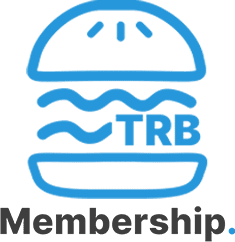
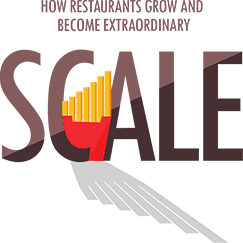

FREE
Get a copy of our newest book for FREE!

GOOD

BETTER
Join our Membership and get New Training every month
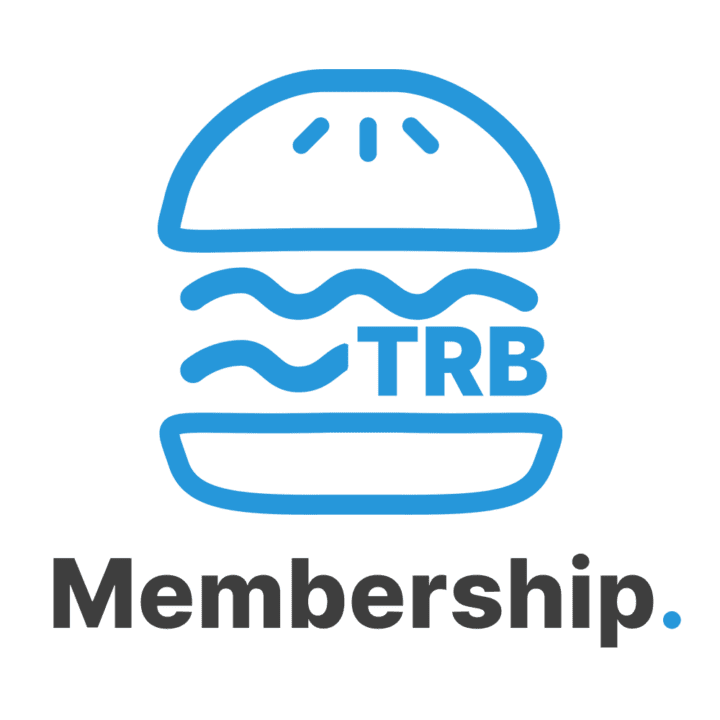
BETTER
Complete our best selling Course SCALE
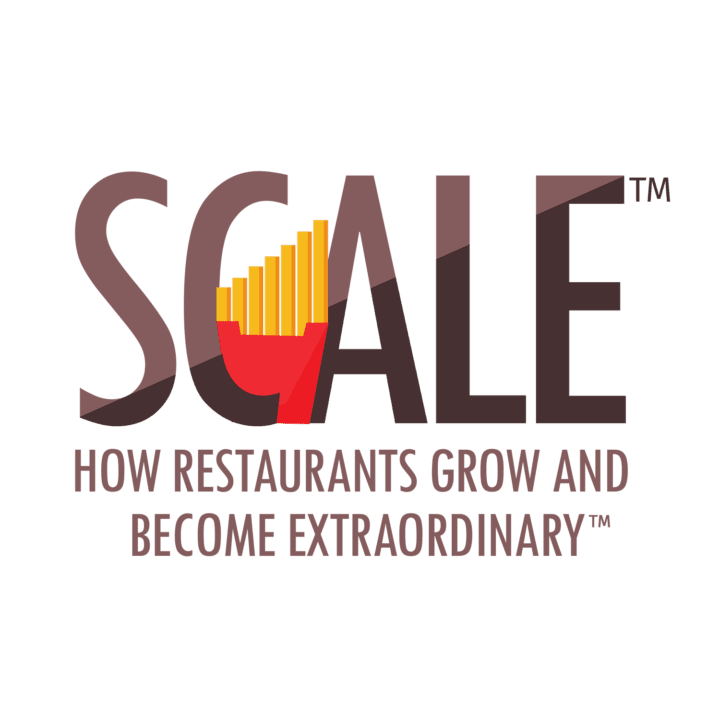
BEST
Work with me ONE-on-ONE
and schedule a Strategy Session

🔊 CLICK HERE TO LISTEN TO THE AUDIO
Read More
Running a Restaurant Isn't Hard
The #1 complaint in restaurant management is poor employee performance. If you’re not following this simple 5-step plan to train your employees, you’re never going to get the results that you want from them …ㅤㅤㅤ
Busy Is Killing Your Restaurant
Are you busy? There are things you’re doing all day, every day in your restaurant and it’s those things that are going to put you out of business. There are 4 things you can do today to battle the busy inside your restaurant …
Follow For More:
